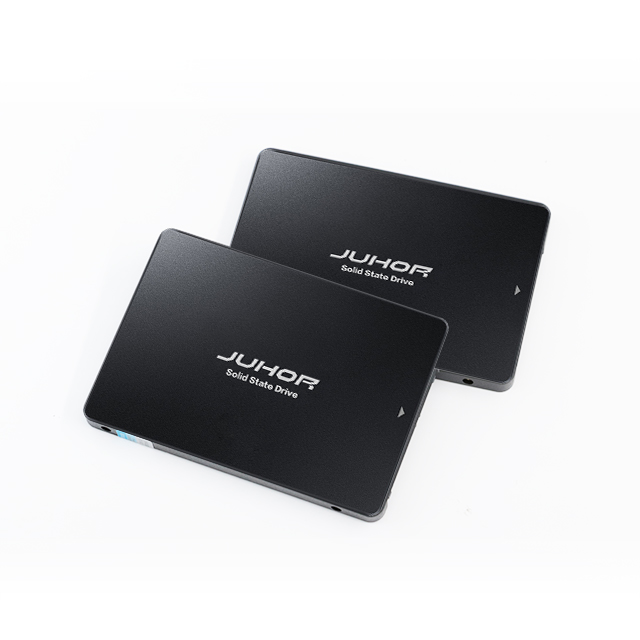The evolution of computer storage technology has transitioned from traditional hard disk drives (HDDs) to solid-state drives (SSDs), offering significant improvements in speed, reliability, and durability. Within this landscape, two primary SSD interface standards have emerged: SATA and NVMe. While both serve the purpose of storing and retrieving data, they differ significantly in performance, architecture, and use cases.
Understanding the key differences between NVMe and SATA can help users make informed decisions when selecting the right storage solution for their specific needs—whether it's for gaming, enterprise computing, or everyday use.

SATA (Serial Advanced Technology Attachment) is a legacy storage interface originally designed for mechanical hard drives (HDDs). It was later adapted to support solid-state drives (SSDs), making it one of the most widely used storage interfaces in consumer and entry-level enterprise systems.
Cost-effective: SATA SSDs are generally more affordable than NVMe drives.
Wide compatibility: Almost all modern motherboards include SATA ports, ensuring broad support across devices.
Mature technology: SATA has been around for years and is well understood by hardware designers and end users.
However, its biggest drawback lies in performance. The latest version, SATA III, offers a theoretical maximum bandwidth of 6 Gbps (~750 MB/s). This limitation makes SATA increasingly unsuitable for high-performance applications where fast data access is critical.
NVMe (Non-Volatile Memory Express) is a modern, high-speed storage protocol specifically developed for flash-based storage such as NAND SSDs. Unlike SATA, which was built around older HDD architectures, NVMe leverages the PCIe (Peripheral Component Interconnect Express) bus to communicate directly with the CPU, eliminating bottlenecks and unlocking much higher performance.
NVMe uses a streamlined command set and supports multiple parallel queues, each capable of handling thousands of commands simultaneously. This advanced architecture drastically reduces latency and improves throughput compared to SATA.
NVMe SSDs can easily reach read/write speeds of 3,000–7,000 MB/s, depending on the PCIe generation (e.g., PCIe 3.0, 4.0, or 5.0). This makes NVMe ideal for demanding workloads like video editing, AI processing, cloud computing, and high-end gaming.

| Feature | SATA | NVMe |
|---|---|---|
| Interface Protocol | AHCI (Advanced Host Controller Interface) | NVMe (Non-Volatile Memory Express) |
| Bus Type | SATA | PCIe |
| Max Bandwidth (Theoretical) | ~750 MB/s (SATA III) | Up to 8,000 MB/s (PCIe 4.0 x4) |
| Latency | Higher due to indirect communication path | Lower due to direct CPU access |
| Command Queues | Single queue with up to 32 commands | 64,000+ queues, each supporting 64,000+ commands |
| Physical Form Factors | 2.5" drive, mSATA, SATA M.2 | M.2, U.2, E1.S, Add-in Card |
| Use Cases | General-purpose computing, budget builds | High-performance computing, servers, content creation |
Bandwidth: SATA III tops out at ~750 MB/s, while NVMe using PCIe 4.0 can deliver up to 8 GB/s. This massive difference becomes especially important for large file transfers, database queries, and media production workflows.
Latency: SATA uses the AHCI protocol, which was optimized for spinning disks and introduces unnecessary delays. NVMe, on the other hand, is built for flash memory and minimizes data path complexity, resulting in lower latency and faster response times.
I/O Operations: SATA’s single command queue with limited depth restricts its ability to handle concurrent operations efficiently. NVMe’s multi-queue architecture allows it to process tens of thousands of commands simultaneously, making it far superior in multi-threaded environments.
SATA SSDs typically come in 2.5-inch form factors or M.2 SATA modules, connecting via standard SATA cables and ports.
NVMe SSDs commonly use the M.2 interface in laptops and desktops. For enterprise use, U.2 and PCIe add-in card formats are also available, offering greater flexibility and scalability.
NVMe’s compact design and direct connection to the PCIe bus contribute to better thermal management and physical integration in modern systems.
Price:
NVMe SSDs tend to be more expensive per gigabyte than SATA SSDs. However, prices have dropped significantly over recent years, making NVMe more accessible even for mainstream users.
Compatibility:
Most modern motherboards support SATA, but not all support NVMe. Older platforms may require firmware updates or additional drivers to enable NVMe functionality.
NVMe is ideal for:
Gaming PCs
Video editing and rendering
Large-scale databases
Cloud services and virtualization
AI/ML model training
SATA is suitable for:
Budget builds
Everyday office tasks
Media streaming and light multitasking
Secondary storage or backup drives
To fully utilize the capabilities of either SATA or NVMe, consider the following design optimizations:
Maximize PCIe Bandwidth
Ensure your motherboard supports the latest PCIe versions (e.g., PCIe 4.0 or 5.0) to take full advantage of NVMe's potential.
Thermal Management
High-performance NVMe SSDs generate significant heat. Proper cooling solutions—such as heatsinks or active cooling—are essential to prevent throttling and maintain sustained performance.
Simplify Data Path
Reduce intermediate steps in data transmission to minimize latency. NVMe’s direct CPU communication helps achieve this naturally.
Power Management
Especially in enterprise environments, intelligent power management can reduce energy consumption, improve system stability, and extend hardware life.
As data demands continue to grow, NVMe is poised to become the dominant storage interface across both consumer and enterprise markets. Its superior performance, low latency, and scalable architecture position it as the go-to choice for next-generation computing.
While SATA remains relevant due to its affordability and widespread adoption, it will likely be phased out gradually in favor of NVMe, particularly in performance-critical applications.
In summary, SATA and NVMe represent two generations of storage technology, each with its own strengths and limitations. SATA is still a solid option for cost-sensitive and general-use scenarios, while NVMe delivers unmatched speed and efficiency for high-performance applications.
Choosing between the two depends on your specific needs, including performance requirements, budget, and system compatibility. By understanding these differences and optimizing hardware design accordingly, you can ensure that your storage solution aligns perfectly with your current and future computing goals.
Whether you're building a workstation, upgrading a laptop, or designing enterprise infrastructure, knowing how NVMe and SATA compare empowers you to make smarter, more strategic choices.